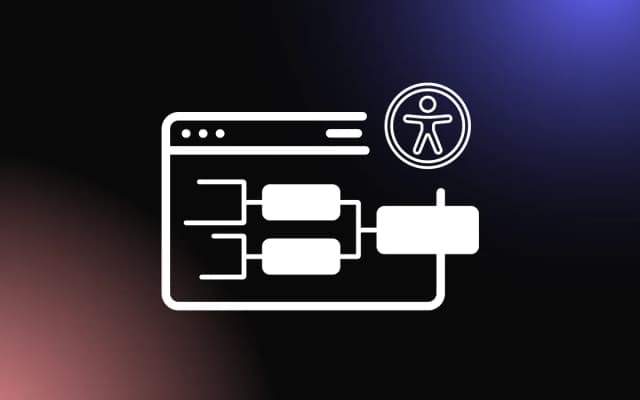Summary (TL;DR):

Every year, millions of basketball fans attempt to predict the perfect March Madness bracket, yet no one has ever officially achieved this incredible feat.
The unpredictable nature of the tournament, combined with statistical improbabilities, makes a flawless bracket nearly impossible. Even with advanced algorithms and a March Madness bracket maker, the chances of perfection remain astronomically low.
This article explores the history of bracket predictions, the closest attempts, and whether a perfect bracket is realistically attainable.
The Quest for a Perfect March Madness Bracket
Every year, millions of basketball fans attempt to create the perfect bracket for the NCAA tournament, but predicting every game correctly remains nearly impossible.
With the help of a bracket maker, participants can build and manage their brackets more efficiently, making the competition more enjoyable and engaging.
The Challenge of Perfection
Statistically, the odds of filling out a perfect bracket are astronomical—approximately 1 in 9.2 quintillion. Even with expert knowledge and historical trends, unexpected upsets make it nearly impossible to get every pick right. However, a bracket maker allows users to analyze teams, apply predictive models, and manage multiple bracket versions with ease.
How a Bracket Maker Enhances the Experience
A bracket maker simplifies the process by automating matchups, tracking results, and updating scores in real time.
Many online tools offer AI-powered predictions, historical data analysis, and customizable options to help users make informed picks. Instead of relying on guesswork, participants can leverage data to increase their chances of success.
Customization and Sharing Options
Using a bracket maker allows users to personalize their brackets with unique scoring systems, team preferences, and even office pool settings. Most platforms also provide easy sharing options, enabling users to invite friends, join groups, or compete in national contests.
Making Brackets More Fun and Competitive
Whether you’re a seasoned analyst or a casual fan picking teams based on mascots, a bracket maker enhances the excitement of the tournament. With features like automated scoring, leaderboards, and real-time updates, it keeps participants engaged throughout March Madness.
Though a perfect bracket may be unattainable, using a bracket maker improves the experience, making every game more thrilling and competitive.
Why Creating a Perfect Bracket Is Nearly Impossible
Every year, millions of fans attempt to build the ultimate NCAA tournament bracket, but predicting every game correctly is almost impossible.
Even with a bracket maker, which helps analyze stats and trends, the sheer unpredictability of the tournament makes perfection elusive.
The Statistical Challenge
The odds of creating a flawless bracket are estimated at 1 in 9.2 quintillion, assuming random selections. Even when using basketball knowledge and historical trends, upsets and unpredictable performances make it nearly impossible to account for every outcome.
The Impact of Upsets
March Madness is known for Cinderella stories—lower-seeded teams pulling off shocking victories against favorites. These unexpected results throw off even the most well-researched brackets, proving that no prediction method is foolproof.
How a Bracket Maker Helps
A March Madness bracket maker can improve accuracy by providing analytics, historical performance insights, and expert-generated projections. While it won’t guarantee a perfect bracket, it helps participants make smarter, more strategic picks.
Despite the challenge, the excitement of competing in bracket pools keeps fans engaged, making March Madness one of the most thrilling sporting events each year.
The Odds and Probability of a Flawless Bracket
Creating a perfect NCAA tournament bracket is one of the most difficult challenges in sports. Even with the help of a bracket maker, the probability of selecting every game correctly is almost impossible due to the unpredictable nature of the tournament.
Breaking Down the Numbers
The statistical odds of randomly picking a flawless bracket are 1 in 9.2 quintillion (9,223,372,036,854,775,808). If you apply basic basketball knowledge—such as favoring higher seeds—the odds improve slightly to about 1 in 120 billion. However, even experts struggle to predict every game due to unforeseen upsets.
Why Upsets Ruin Brackets
March Madness is known for major surprises, with lower-seeded teams frequently defeating top-ranked opponents. Every year, shocking results bust even the most well-researched brackets, proving that no prediction model is foolproof.
How a Bracket Maker Helps
While a bracket maker cannot guarantee perfection, it improves predictions by using historical data, team performance analytics, and AI-generated insights. This increases the likelihood of making better choices, even if a perfect bracket remains unrealistic.
Despite the near impossibility, millions of fans participate each year, drawn to the excitement of competing in pools and seeing how far their brackets last before being busted.
Has There Ever Been a Perfect March Madness Bracket?
Every year, millions of basketball fans fill out their NCAA tournament brackets, hoping to achieve perfection. With the help of a March Madness bracket maker, participants can make more informed picks, but the dream of a flawless bracket remains nearly impossible. So, has anyone ever accomplished this feat?
The Elusive Perfect Bracket
As of today, no one has ever officially submitted a verified, perfect March Madness bracket. The closest anyone has come was in 2019, when Greg Nigl, an Ohio resident, correctly predicted the first 49 games of the tournament before missing a Sweet 16 matchup. This remains the longest streak of accurate predictions in recorded history.
The main challenge lies in the sheer number of possible outcomes. A standard March Madness bracket maker helps organize matchups and analyze data, but it cannot account for the unexpected upsets and Cinderella runs that define the tournament.
Why Is It So Difficult?
The NCAA tournament is known for its unpredictability. Lower-seeded teams often defeat top-ranked opponents, and injuries, momentum shifts, and game-day performance all play a role. The odds of randomly picking a perfect bracket stand at 1 in 9.2 quintillion. Even basketball experts who use statistics and predictive modeling only improve their chances to about 1 in 120 billion.
While a March Madness bracket maker helps participants by using analytics, expert insights, and historical data, the randomness of the tournament ensures that no bracket is ever truly safe from being busted.
The Role of Data and AI in Bracket Predictions
Recent advances in AI and predictive analytics have allowed for more strategic bracket-building. Some bracket maker tools incorporate machine learning to analyze trends, team performance, and player statistics. These tools improve the probability of making correct picks, but even the best models cannot account for every possible upset.
Additionally, the NCAA tournament selection process itself introduces variability. The seeding system is based on committee rankings, and matchups can be unpredictable. Teams that enter the tournament in peak form can outperform their seed rankings, further complicating bracket accuracy.
Will There Ever Be a Perfect Bracket?
While theoretically possible, achieving a perfect bracket remains one of the most difficult statistical feats in sports. Even the most advanced March Madness bracket maker can’t guarantee perfection because of the many unpredictable factors in play.
However, the excitement of trying keeps millions of people engaged every year. Whether for office pools, online contests, or personal bragging rights, the challenge of building the best bracket makes March Madness one of the most thrilling sporting events in the world.
So, while no perfect bracket has ever been recorded, the pursuit continues, fueled by passion, strategy, and the hope that someday, someone will defy the odds. Until then, using a bracket maker is the best way to maximize your chances of creating a strong, competitive bracket.
The Closest Attempts in NCAA History
Despite millions of participants filling out brackets each year, no one has ever completed a perfect March Madness bracket. However, a few individuals have come close, thanks to a combination of basketball knowledge, luck, and strategic picks made with the help of a bracket maker.
Greg Nigl’s Historic Run (2019)
The closest attempt came in 2019 when Greg Nigl, an Ohio resident, correctly predicted the first 49 games of the tournament before missing a Sweet 16 matchup. This remains the longest verified streak of correct picks in NCAA bracket history. His bracket remained perfect through two rounds, defying the astronomical odds of 1 in 9.2 quintillion for a randomly chosen perfect bracket.
Other Notable Near-Perfect Brackets
Before Nigl’s record, the longest streak was 39 correct picks in 2017. In 2015, another bracket correctly predicted the first 36 games before missing a Round of 32 matchup. These streaks demonstrate just how difficult it is to maintain perfection deep into the tournament.
How Bracket Makers Help
A bracket maker helps participants refine their picks by analyzing historical data, team matchups, and statistical probabilities. While it won’t guarantee a perfect bracket, it increases the chances of making informed selections.
These near-perfect brackets prove that while perfection remains elusive, strategic decision-making and predictive analysis can help participants achieve deep runs in their bracket pools.
How Experts and AI Predict Bracket Outcomes
Creating a perfect NCAA bracket is nearly impossible, but experts and AI-driven models use advanced strategies to improve accuracy. While a bracket maker helps simplify the process, expert analysts and machine learning algorithms take predictions to the next level.
Expert Analysis and Statistical Models
Sports analysts rely on in-depth statistical analysis to predict bracket outcomes. They examine factors such as:
- Team efficiency ratings (KenPom, NET rankings)
- Head-to-head matchups and historical performance
- Player injuries and fatigue levels
- Coaching strategies and tournament experience
Experts also consider team momentum, which can be a game-changer in high-pressure elimination rounds. While no prediction model is foolproof, these insights help improve accuracy when filling out a bracket maker.
The Role of AI and Machine Learning
AI-driven March Madness bracket maker tools leverage vast amounts of historical and real-time data to generate predictions.
Machine learning models analyze past tournament trends, player statistics, and upset probabilities to determine the most likely outcomes.
Some of the key AI strategies include:
- Monte Carlo simulations: Running thousands of tournament simulations to determine the probability of different outcomes.
- Neural networks: Identifying patterns in team performance data to predict potential upsets.
- Big data analysis: Comparing millions of past game scenarios to make more informed bracket choices.
Can AI Create a Perfect Bracket?
Despite advances in AI, predicting a flawless bracket remains an unsolved challenge due to the tournament’s unpredictability. However, AI-driven tools significantly increase the odds of making deeper, more accurate predictions compared to traditional methods.
Tips for Creating the Best Possible Bracket
While achieving a perfect NCAA tournament bracket is nearly impossible, using a March Madness bracket maker and following strategic guidelines can help you build the best possible bracket.
Whether you're competing in an office pool or a high-stakes contest, these expert tips will improve your chances of success.
1. Research Team Performance and Rankings
A strong March Madness bracket maker incorporates analytics, but understanding key performance indicators yourself is essential. Study advanced metrics such as:
- KenPom Ratings (offensive and defensive efficiency)
- NET Rankings (used by the NCAA selection committee)
- Head-to-head records and strength of schedule
Higher-seeded teams generally win in the first round, but don’t blindly pick them—research matchups for potential upsets.
2. Predict Early-Round Upsets Carefully
Every year, lower-seeded teams pull off shocking wins. While a bracket maker may highlight potential upsets, history shows that No. 12 seeds win against No. 5 seeds about 35% of the time. Additionally, at least one No. 10, 11, or 13 seed usually advances to the Sweet 16.
Look for teams with strong defenses, veteran leadership, or momentum from winning their conference tournaments.
3. Avoid Overvaluing Cinderella Teams
While picking a Cinderella team to go far is tempting, history shows that No. 8 seeds or lower rarely reach the Final Four. A few surprises occur each year, but don’t fill your bracket with deep runs from double-digit seeds. Instead, balance your picks with a mix of favorites and calculated upsets.
4. Consider Historical Trends and Coaching Experience
Teams with strong tournament history and experienced coaches tend to perform well. Programs like Duke, Kansas, and Michigan State have consistently deep runs. A March Madness bracket maker may factor in historical performance, but doing your own research on coaches with Final Four experience can provide an edge.
5. Pay Attention to Injury Reports and Travel Schedules
Late-season injuries to key players can change a team’s chances dramatically. Before finalizing your picks, check injury updates and whether teams have long travel schedules, which may affect performance.
6. Use a Bracket Maker for Multiple Variations
A March Madness bracket maker allows you to generate different versions of your bracket, testing various scenarios. Submitting multiple entries with slight variations increases your chances of success.
7. Don’t Forget to Have Fun
March Madness is unpredictable, which is what makes it exciting. Even if you use the best strategies and analytics, surprises will happen. A bracket maker helps create structured picks, but at the end of the day, the tournament is about the thrill of competition.
Using a March Madness Bracket Maker for Better Predictions
A bracket maker is a valuable tool for improving your predictions and maximizing your chances of winning a tournament pool. With so many games and unpredictable upsets, using a structured approach helps refine your picks and eliminate guesswork.
How a Bracket Maker Enhances Accuracy
A bracket maker incorporates real-time analytics, historical data, and expert insights to create smarter predictions. These tools use advanced metrics such as:
- KenPom Ratings to evaluate offensive and defensive efficiency.
- Team NET Rankings to assess overall performance.
- Upset probabilities based on past tournament trends.
Testing Multiple Bracket Scenarios
One of the biggest advantages of using a bracket maker is the ability to generate multiple versions of your bracket. Instead of sticking to one set of predictions, you can test different outcomes, such as a Cinderella team making a deep run or a top-seeded favorite dominating the field.
Finalizing Your Bracket
After analyzing the data and exploring different scenarios, finalize your best version based on strategic picks. A bracket maker not only helps you streamline your decision-making but also gives you an edge in predicting tournament outcomes more effectively.
Strategies to Improve Your Bracket Picks
Building a strong NCAA tournament bracket requires more than luck. Using a March Madness bracket maker helps structure your picks, but applying proven strategies increases your chances of success. Here are key tactics to improve your bracket picks:
1. Follow Historical Trends
History shows that No. 1 seeds reach the Final Four about 40% of the time, while at least one No. 12 seed upsets a No. 5 seed almost every year. A bracket maker can highlight these trends, helping you avoid common pitfalls.
2. Don’t Overload on Upsets
While Cinderella stories are exciting, lower-seeded teams rarely make deep runs. Avoid picking too many double-digit seeds in later rounds—statistically, only one or two make it past the Sweet 16 each year.
3. Look for Balanced Teams
Teams with a strong defense and efficient scoring have a higher chance of advancing. Metrics like KenPom ratings and NET rankings help identify balanced teams that can handle tournament pressure.
4. Consider Coaching Experience
Teams with veteran coaches tend to outperform expectations. Programs like Duke, Michigan State, and Kansas consistently advance due to their experienced leadership.
5. Diversify Your Picks
If submitting multiple brackets, diversify your choices by making different Final Four selections in each. A bracket maker allows you to test various scenarios to maximize your chances.
Can a March Madness Bracket Maker Help Achieve Perfection?
Despite the best strategies and tools, the odds of filling out a perfect bracket maker prediction remain staggeringly low.
However, with data-driven insights and a solid approach, you can improve your chances of making a competitive and well-structured bracket. Keep the excitement alive, embrace the unpredictability, and see how far your predictions can go!


